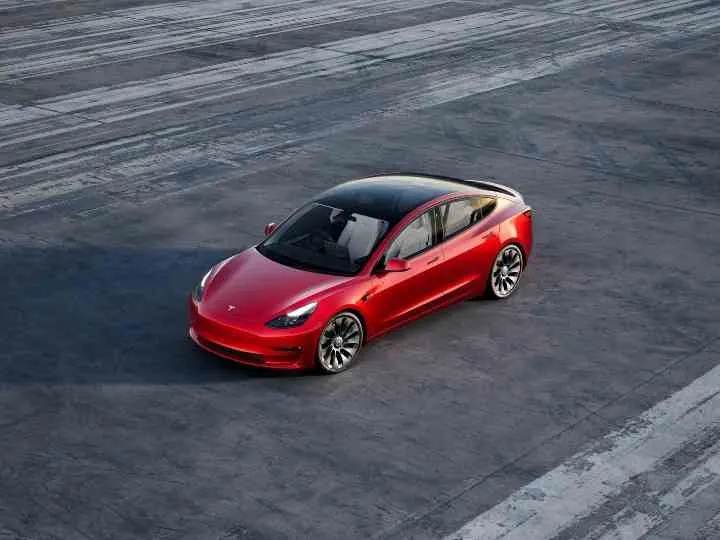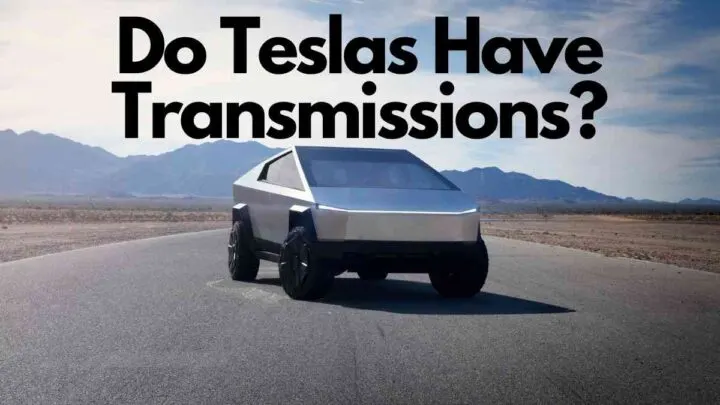Pretty much everyone has heard about Tesla’s all-new line of electric cars.
However, not everybody understands how they’re different from traditional vehicles.
Most automobiles use a conventional transmission system to deliver power to their wheels.
Do Teslas even have transmissions?
Teslas have transmissions but they are different than other transmissions in that they have only one single gear. Because Teslas are powered by the stored energy in their batteries rather than a combination of cylinders powered by traditional combustion engines, they have all the power they need as soon as you turn them on.
The transmission system used by Tesla is able to deliver power without using any gears.
As such, driving one of them tends to feel much smoother than sitting in a regular car.
Even automatic transmissions don’t seem like they’re as smooth as one of the ones used by Tesla.
Still, that doesn’t mean Teslas don’t use a transmission system. They’re just using one that’s a lot different than others that you’ve seen.
Technically, it’s a 1-gear transmission system.
What Makes Tesla’s Transmission Different?

Traditionally, most cars were built with five gears under the hood. Smaller gears deliver power better at a lower speed, giving them great acceleration.
Larger gears tend to perform better when you’re looking to get the highest top speed possible.
That’s how things have been in the car industry since we’ve been driving them.
However, Tesla has done something different by creating a new transmission system.
Theirs doesn’t use gears like the ones you’ve seen in other cars before.
Because they use electric motors, Teslas change how power gets to the wheels.
Most traditional engines don’t exceed 5000 rpm, at the most.
Anything above that would put them at risk of catastrophic failure. That means possibly destroying the entire engine block.
An electric motor isn’t limited by the piston’s ability to combust fuels. They’ve got a ton of stored power, waiting to get used, in their batteries.
Tapping into that stored power drastically increases how fast the engine can spend.
Some of them can even reach as high as 20,000 RPM.
That’s up to five times faster than what you’d see behind the wheel of a normal car. And, we’re talking about when you’re flying down the highway.
So, that’s quite a big difference, especially if you’ve paid attention to the details.
Since they are able to reach such high RPMs, they don’t need multiple gears.
They are able to work a lot like a single gear bike.
Each time you’re pressing on the accelerator, it wraps up the engine.
That makes the engine increase its RPMs, delivering more power to the wheels and making you go faster.
If you’ve been working on cars for a while, you’re probably familiar with the gearing ratios.
Adjusting them on a normal car makes it possible to change how it handles.
Do Teslas Need Transmission Fluid?
Anyone who’s owned a car has probably had to replace its transmission fluid at some point.
Otherwise, they’d be running the risk of causing damage to it. Transmission fluid decreases the amount of friction in the engine when you’ve got the car on.
Normally, an engine produces a ton of heat anytime you’ve got it on because of all the combustion.
Igniting fuels releases a lot of energy, most of it in the form of heat. Excessive temperatures are a direct byproduct of using an internal combustion engine.
Unfortunately, all that excess heat poses a threat to the integrity of your engine. If it gets too hot, its components will begin to break.
Transmission fluid prevents your engine from overheating by reducing the amount of friction.
That’s how things have been for a long time if you’re looking at the history of engine construction.
Now, things have changed because of how Tesla has designed their engines. Since they use electric engines, they’re able to work without generating as much heat.
As of result of its lower operating temperature, you don’t need to use transmission fluid. That’s why Tesla hasn’t put transmission fluid in any of their vehicles.
Tesla engineers recommend vehicle owners use a lubricant on the engine’s transmission system.
However, the one they’ve put on them at the factory has an expected lifespan of 500,000 miles.
So, unless you’re driving a lot, you won’t have to worry about anything soon.
Do Teslas Have Differentials?

Teslas are made using an open differential. Usually, a differential delivers differing amounts of power to each of the wheels.
An open differential doesn’t change how much power goes to each of them, though.
They were pretty popular on vehicles about 50 years ago. However, you can find them on new Tesla’s today as well.
That’s because they are built using a unique transmission system.
Internal combustion engines deliver power to a single driveshaft. That’s where you’ll find its differential, distributing power to all the wheels.
When you turn, it causes the differential to change how much gets delivered to each of them.
Turning a typical car wouldn’t be possible without using a differential. That’s because it would put too much stress on the driveshaft, potentially breaking it.
Using them lets the driveshaft deliver the appropriate amount of power to each wheel.
Tesla doesn’t use a differential, though. They are able to circumvent this issue by using an engine for each of the wheels.
Inside the car, there’s an electronic control module.
It’ll help determine how much power each engine should deliver to all the car’s wheels.
Because they are not using a central driveshaft, you don’t need to use a differential.
Building a car without using one makes it possible to limit how many repair issues at all have.
One of the most common pieces to break on a transmission system would be the differential.
Since Teslas don’t have them, you don’t have to worry about replacing them. You’ve just got to make sure they’re going to the dealer for maintenance on a regular basis.
Taking them there often should help prolong their lifespan.
This system is also responsible for the car’s traction control. It’s able to detect how much traction each of its wheels has when you’re on the road.
Then, it can change how much power goes to each one of them, depending on the road’s condition.
When there’s a loss of traction, it’ll adjust where power is sent. That’s how it’s able to prevent you from losing control while you’re driving on slippery roads.
Delivering power to each of them makes it a lot easier for them to maintain traction if the road gets slippery.
A combination of sensors and software makes all this happen. The sensors can tell how much traction each of the wheels has when you’re driving.
By feeding the software with this info, it’s able to help you maintain control.
Sending less power to wheels that have lost grip can make it easier for them to regain traction.
Maintaining traction allows you to always have control over the vehicle. So, the way they’ve implemented their system is an incredible advance in auto safety.
Does Tesla Use a CVT Transmission?
Teslas don’t have any gears, but that doesn’t mean they’ve got a CVT transmission. They are made using a single gear transmission system.
